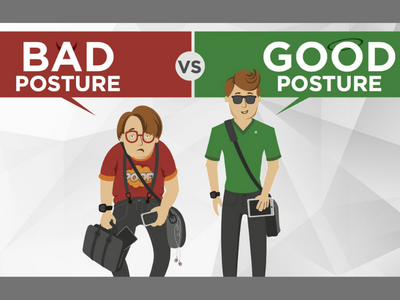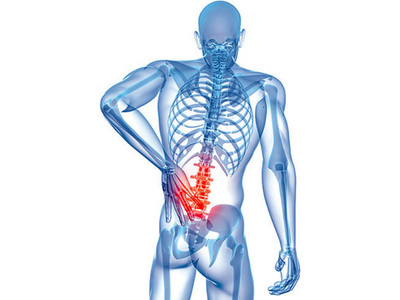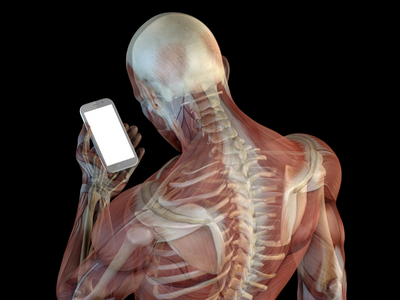Good posture is a good habit that contributes to the wellbeing of the individual. The structure and function of the body provide the potential for attaining and maintaining good posture.
Conversely, Bad posture is a bad habit and, unfortunately, is all too common . Postural faults have their origin in the misuse of the capacities provided by the body, not in the structure and function of the normal body.(1)
If faulty posture were merely an aesthetic problem, the concerns about it might be limited to those regarding appearance. However, postural faults that persist can give rise to discomfort, pain, or disability . The range of effects, from discomfort to incapacitating disability, is often related to the severity and persistence of the faults.(1)
The high incidence of postural faults in adults is related to this tendency toward a highly specialized or repetitive pattern of activity. Correction of the existing conditions depends on understanding the underlying influences and implementing a program of positive and preventive educational measures. Both require an understanding of the mechanics of the body and its response to the stresses and strains imposed on it.(1)
What does research say about this???
- Ten trials with 2745 participants were included in this review.The present review found low quality evidence that those who received workplace interventions did not get more pain relief than those who received no interventions.(4)
- There is evidence which is limited in quality to indicate that ergonomic workplace interventions can improve gross sitting posture.(5)
However research stated that workplace interventions for correcting faulty postures have been ineffective and have very low quality or limited evidence that having a ergonomically perfect chair will solve the problem.
 A problem arises, however, because skilled performance in a variety of sport, dance, and acrobatic activities requires excessive flexibility and muscle length. Although “the more, the better” may apply to improving the skill of performance, it may adversely affect the well-being of the performer. Hence managing postural faults for athletes, dancers and active individuals in a different ball game.
A problem arises, however, because skilled performance in a variety of sport, dance, and acrobatic activities requires excessive flexibility and muscle length. Although “the more, the better” may apply to improving the skill of performance, it may adversely affect the well-being of the performer. Hence managing postural faults for athletes, dancers and active individuals in a different ball game.
The following definition of posture was included in a report by the Posture Committee of the American Academy of Orthopedic Surgeons (6). It is so well stated that it bears repeating.(1)
“Posture is usually defined as the relative arrangement of the parts of the body. Good posture is that state of muscular and skeletal balance which protects die supporting structures of the body against injury or progressive deformity, irrespective of the attitude (erect, lying, squatting, or stooping) in which these structures are working or resting. Under such conditions the muscles will function most efficiently and the optimum positions are afforded for the thoracic and abdominal organs. Poor posture is a faulty relationship of the various parts of the body which produces increased strain on the supporting structures and in which there is less efficient balance of the body over
its base of support.
FAULTY POSTURE:-
If incorrect postures become a habit at an early age, individuals maintaining those postures may adapt and consider them comfortable, and this can cause strain on the spine, pelvis, muscles, tendons, joints, bones, and discs, which can lead to fatigue and deformation.(2)
Thus, incorrect habits, such as excessive use of computers, use of desks and chairs without proper height, lack of health care education, lack of exercise, carrying heavy school bags, and inappropriate postures when studying or watching television, affect the shape of muscles, deform the skeleton, and cause abnormal development, which prohibit the maintenance of correct posture(1)
When discussing pain in relation to postural faults, questions are often asked about why many cases of faulty posture exist without symptoms of pain, and why seemingly mild postural defects give rise to symptoms of mechanical and muscular strain.
The answer to both depends on the constancy of the fault. An interesting concept which has not been mentioned most texts is the difference between a faulty posture and postural stresses has been discussed in an interesting microblog.
What are postural stresses?
“Postural stress” is a challenge to your posture that is imposed on you, as opposed to something you’re doing to yourself out of laziness. Postural stress is easier to define, maybe easier to causally link to pain, and certainly often much easier to solve than poor posture. They are also the reason for most of the musculoskeletal problems arising in the name of faulty posture.(2)
Usually with a postural stress the muscles give way because they are tired and irritated of working in that awkward position as compared to faulty posture where muscles are not used at all and eventually they tend to switch off.
For example prolonged sitting caused your butt muscles to stop working efficiently but prolonged sitting without back support causes your neck muscles to be tired and irritated leading to poker chin posture which eventually causes neck pain.
Postural stress and faulty posture may have many common developmental factors but it is obvious that postural stresses are situaltional where the person may not have a choice and adopting faulty posture may be out of just laziness and a foolish choice.
For example:-

- Trying to sleep where it is impossible to do so, like in a aeroplane or a car seat is a postural stress whereas sleeping with 2-3 pillows slouching on the bed is a adopted foolish faulty posture
- Another example would be a nurse, who has to constantly bend from the back to lift patients/ perform her duties and be on toes for major part of the duty hours. This makes them prevalent from back pain and heel pain out of postural stresses. But the same nurse who chooses to wear heels everyday at work is adopting a faulty foot posture which may lead to her back pain and heel pain.
- Similarly an office employee who travels with the laptop for marketing may not find an ergonomically suited desk and works in the available position placing the laptop on the lap, or a table of the available height. This postural stress might contribute to neck pain or mid back pain.
POSTURE ANALYSIS AT PHYSIOCURE:-
For posture examination, first a basic posture is examines in standing position followed by sitting and / or supine if required. For each profession further specific examination may be added.
For example :-
- For a lab technician the pinches and grip holding position and the lab setup is examined.
- For a marathon runner, the running form is examined.
Check out our basic posture analysis form.
MANAGEMENT OF POSTURAL PROBLEMS:-
Inherent in the concept of good body mechanics are the inseparable qualities of alignment and muscle balance. Examination and treatment procedures are directed toward restoration and preservation of good body mechanics in posture and movement.
Therapeutic exercises to strengthen weak muscles and to stretch tight muscles are the chief means by which muscle balance is restored.
Good body mechanics requires that range of joint motion be adequate but not excessive. Normal flexibility is an attribute; excessive flexibility is not. A basic principle regarding joint movements can be summarized as follows:
the more flexibility, the less stability; the more stability, the less flexibility.
here are some simple exercises to correct a faulty upperbody posture
What does research say?
Research studies show that steady exercise corrects posture, which improves the balance of the body, and relaxes the whole body, which relieves musculoskeletal pain. Therefore, the development and introduction of suitable exercise programs will contribute to the physical and mental health of society.(3)
We at Physiocure do not advise you to correct your static posture but examine you thoroughly for the postural stresses as well and help improve aches and pains arising out of these postural stresses, which eventually help in improving your faulty posture.
REFERENCES:-
- Muscles Testing and Function with Posture and Pain (5th Edition) Florence Peterson Kendall, Elizabeth Kendall McCreary, Patricia Gelse Provance, Mary, Mclntyre Rodgers, William Anthony Romani.
- Poor posture versus postural stress – www.painscience.com/microblog.html
- Effect of an exercise program for posture correction on musculoskeletal pain DeokJu Kim,1 MiLim Cho,2 YunHee Park,3 and YeongAe Yang4,
- Workplace interventions for workers with neck pain Aas RW, Tuntland H, Holte KA, Røe C, Lund T, Marklund S, Moller A
- Workplace interventions to improve sitting posture: A systematic review.Swinton PA1, Cooper K2, Hancock E3.Prev Med. 2017 Aug;101:204-212. doi: 10.1016/j.ypmed.2017.06.023. Epub 2017 Jun https://www.ncbi.nlm.nih.gov/pubmed/28647545





